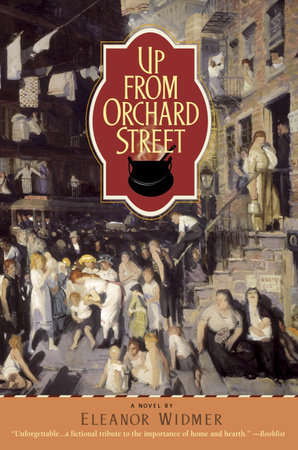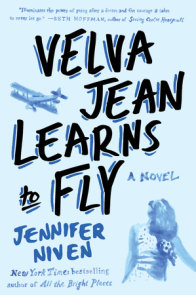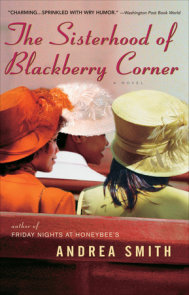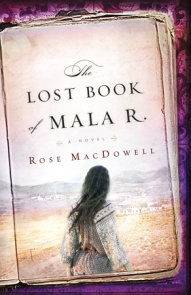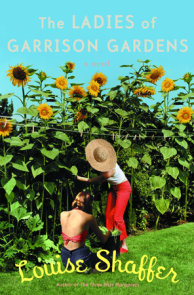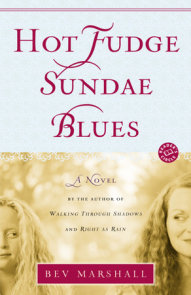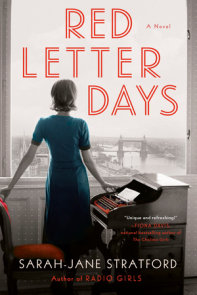READERS GUIDE
Set in one of New York City’s most legendary communities, Up from Orchard Street beautifully reimagines an extraordinary family who symbolize the soul and spirit of the American immigrant experience.Told through the memories of Elka Roth, the novel unfolds within the walls of 12 Orchard Street, a tiny Lower East Side tenement where poverty and illness are no match for the charismatic immigrants living there. Elka’s closest ally is her grandmother, Manya, an unforgettable matriarch known for her generous but world-wise heart–and for the marvelous recipes that traveled with her from Russia, to the delight of those who gather at her restaurant. Elka’s parents, Jack and Lil, envision a life of riches that always seems to linger just out of reach, leaving Elka to imagine what the world beyond Orchard Street might have in store for her. Through the challenges each season brings, she crafts exhilarating tales that will delight readers from every generation. Combining the vibrant narration of Like Water for Chocolate with the tender legacies of A Tree Grows in Brooklyn, Up from Orchard Street brims with joy and wisdom.
The questions and discussion topics that follow are intended to enhance your reading of Eleanor Widmer’s Up from Orchard Street. We hope they will enrich your experience of this deeply moving novel.
Questions and Topics for Discussion
1. In her afterword, Eleanor Widmer tells us that Up from Orchard Street is "part memoir, part social history, and part fiction. Nevertheless, every word is true." How was your reading enhanced by her decision to blend memoir with fiction? How would you characterize Elka’s storytelling voice?
2. What seems to be the source of Manya’s strength, enabling her to nurture not only her family but others in the community (including Dr. Koronovsky)? How did the story of her escape with Misha, and their early days in New York, shape her character? Who are the Manyas in your family?
3. In Chapter Two, "Paradoxes," Elka says that she and Willy "never resented our parents’ diversions and entertainments, or their fine clothes compared to our shabby ones," and "encouraged by Bubby, who attempted to shield them from the harsher realities of the ghetto, Jack and Lil had the aura of visitors who sometimes invited their children to their parties." Was Manya’s role as parent and grandparent a typical one? What prevented Jack and Lil from possessing her instincts for parenting?
4. Manya always found a way for her family to eat well, preparing delectable stews and soups with homemade noodles, sweet potato and prune tzimmes, kugel, challah, rugalach, savory stuffed cabbage, and dozens of other dishes. How did her approach to food differ from that of other restaurateurs in her neighborhood? Did she and Lil emphasize keeping kosher to the same degree? How did her cuisine differ from "American" cooking? What kept Manya from having the same level of commercial success enjoyed by some of the other cooks and bakers on the Lower East Side? How did Eleanor Widmer’s career as a food writer enhance the novel?
5. Discuss the role of illness and health care in the novel. Would you describe the Roths’ living conditions as entirely unhealthy? Is Dr. Koronovsky’s brand of personalized care available in the twenty-first century? What might Willy’s diagnosis have been? What conclusions do you think Dr. Scott Wolfson drew in his study?
6. In Chapter Ten, "The Return of Mister Elkin," Dr. Koronovsky tells Manya, "Too bad Jack didn’t finish college, go to law school. He decided on the easy way out." Would you agree that Jack took the easy way out?
7. What enabled someone as resilient as Manya to fall in love with the likes of Mr. Elkin? How do most of the novel’s characters experience love? How do they react to infidelity? Are Uncle Geoff and Jack alike in their attitudes toward women? In Chapter Fourteen, "The Arrival of Maurey," what does Lil try to teach Elka about women and marriage after Elka tells her, " I would hate Aunt Bea’s life. You live on Orchard Street, but you have a better life"?
8. Like her grandfather Misha, Elka is drawn to literature. How do books and storytelling affect her view of the world? What forms of entertainment did she and her family relish, in a world without television or sports clubs?
9. Discuss Clayton’s role in the family. In what way is his world similar to the Roths’? What does Manya say about their differences?
10. What role did religion play in Elka’s family? To what extent was Judaism integral to their identity? How did vocabularies, both Russian and Yiddish, give them another means of defining themselves?
11. Lil and Jack emphasize appearance above intellect, worrying that Elka won’t be able to marry if she reads too much. Is this line of thinking just a product of history, or does it still exist? Is their concern with fashion and image ingrained in American culture?
12. In Chapter Twenty-three, "The Circle," Elka watches her mother’s disappointing reunion with Maurey and says, "On the rackety train ride that hurtled us home, suddenly and unaccountably, I fell in love with my mother, and all the bad and silly stuff tucked itself away." How is Elka affected by having a mother who is both physically and emotionally fragile?
13. Elka indicates that were it not for Mrs. Rosinski’s suicide, her family might have stayed on Orchard Street even longer. How did omens, good and bad, shape their decision-making?
14. Their move to the brand-new pricier apartment indicates that finances weren’t the main reason for staying at 12 Orchard Street. What kept them from moving to Yonkers or an outer borough, as their relatives did? What were the benefits of staying in the tenement building? What did Manya lose by leaving it? How did Elka perceive creature comforts, such as the experience of Pankin’s Farm, after the move?
15. How might the novel have changed if it had been narrated from another generation’s point of view–such as Jack’s or Manya’s?
16. What did you discover about the various communities living within blocks of each other on the Lower East Side? Has the standard of living changed among today’s immigrant neighborhoods? Did any particular neighborhood mark your ancestors’ arrival in America?









